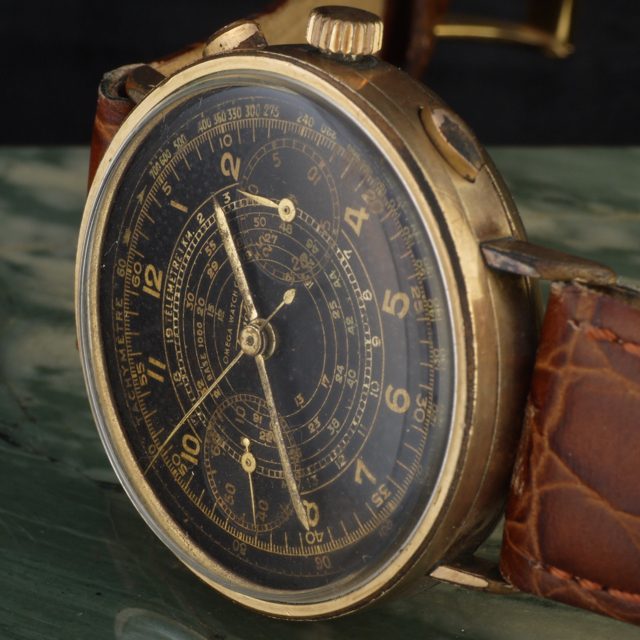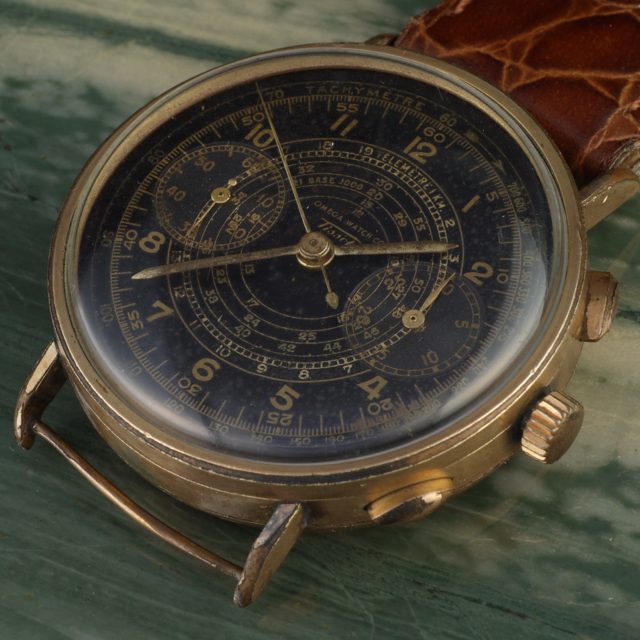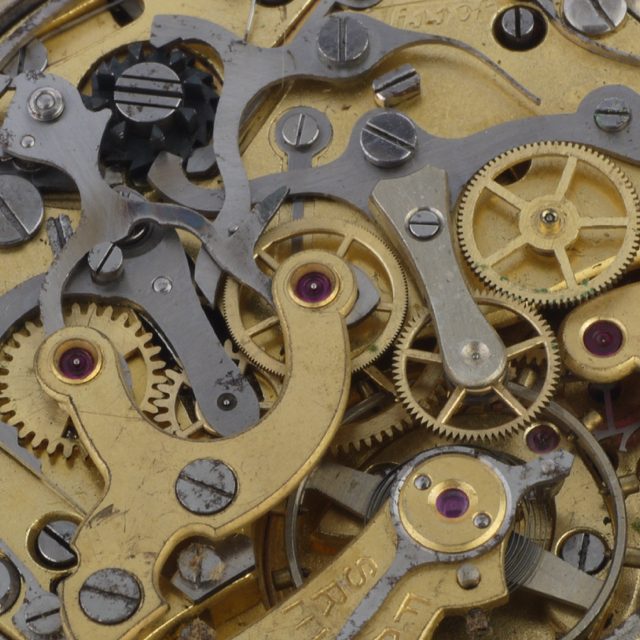



Omega-Tissot Chrono Tachy-Telemeter
Glenn Seaborg and Edwin McMillan isolate plutonium, a fuel preferable to uranium for nuclear reactors1941 Omega-Tissot Tachy-telemeter fixed lug, gold plated case.
By the 1940s, the demand for these watches had increased tremendously. The use of chronographs was now not only for military and scientific purposes, but also important for use in motor sports.
Omega and Tissot have always been two different companies, despite marriages between the two families.
After the crisis of 1929 the market for watches collapsed in Europe and the solution found by Omega and Tissot was to unite the capital in a single holding company “SSIH Societe Suisse pour l’Industrie Horlogere”, but maintain separate companies – Omega with medium high market and Tissot with medium market. Now both brands are part of the Swatch group.
A tachymeter scale measures how fast an object is moving. The scale can be found either on the dial or in the bezel. Most tachymeters start at 400 and end at 60, but some models can show different numbers. Its very simple to calculate the speed: just mark a point and push the start button. After the object has moved for one kilometer (or mile), push the stop button. The number indicated by the hand shows the speed of the object.
A telemeter scale measures the distance between the user of the watch and the event seen and heard. It was used extensively to calculate when artillery fired. When you saw the light of the shot of the artillery, you would push the start button and push the stop button when the thunder was heard. The number shown in the scale refers to the distance.
